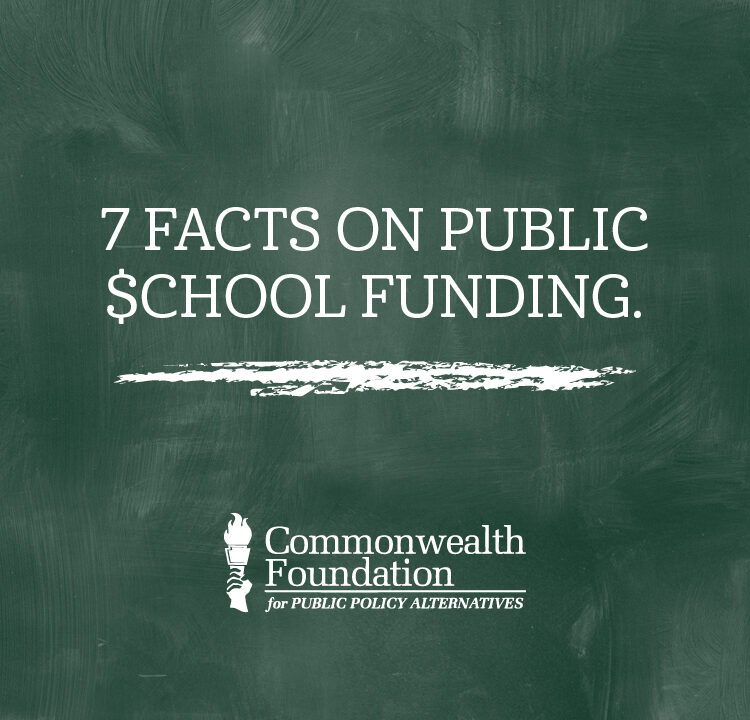Media

7 Little-Known Facts on Pennsylvania Public School Spending
For years, teachers unions in Pennsylvania have claimed the governor cut $1 billion from schools. But the real story is more complicated. A huge influx of federal stimulus funding expired, a loss school districts and others were aware would happen. At the same time, state funding for public education has increased. See the real facts on school spending below.
1) State spending on public education is at the highest level ever.
Last year, the state legislature approved nearly $10 billion in state funding for PreK-12 public education, an all-time high. In addition, total funding (which includes local funds from property taxes, state and federal funding) continues to exceed $14,000 per student.
2) The “cuts” in the 2011-12 budget for education came entirely from temporary federal stimulus funds that expired.
The money came from the 2009 American Recovery and Reinvestment Act, which included both direct funding to school districts and money to preserve jobs. When the federal funds expired, Gov Corbett and state lawmakers increased public education funding from state funds to replace some of that amount. Gov. Ed Rendell, in contrast, did the opposite, using federal dollars to increase funding for schools while cutting the funding from state tax dollars.
3) Teachers’ unions and others are using selective numbers to show a cut in school funding.
The Pennsylvania State Education Association (PSEA) cites only the parts of state aid to public schools that have gone down—not the line items that have increased.
For example, when the PSEA says “Basic Education” funding has gone down, it’s counting the little over half of regular education funding that is distributed via a formula to school districts. But the figure excludes items such as special education, early childhood education and nutrition programs.
4) That also means the PSEA isn’t counting pension payments for teachers in education funding.
The PSEA claims pension funding doesn’t go to the classroom, even though it benefits teachers, classroom aides and other school employees who make public education work. The pension line item in the state budget—the state pays districts a bit more than one-half of the required contribution for school employees’ retirements—is among the fastest growing items in the budget and a big reason why state aid has increased. Not counting that increase implies that funding teachers’ pensions doesn’t benefit students.
5) Stimulus funds began affecting education funding a year earlier than the PSEA and some lawmakers claim.
The PSEA and some lawmakers designate Fiscal Year 2008-09 as the “pre-stimulus” starting point, to show how previous levels of education funding were higher than they are today. But federal stimulus funds were part of state spending in that year, even if they weren’t earmarked for education.
While the extra money mostly went towards welfare programs, it allowed Gov. Ed Rendell to cut Medicaid spending from state tax dollars and use those funds to public education instead. He was thus able to increase education spending despite a budget deficit—and it looked like education funding had increased without temporary federal help.
6) School districts have been able to increase their reserve funds, despite claims of major shortfalls.
Yes, that’s right: Across Pennsylvania, public schools managed to grow their “fund balances”—funds to support future spending and rainy day savings—by $300 million last year. The latest figures available show public schools have accumulated $3.5 billion in total reserves. In fact, these reserves have been growing for about a decade, jumping 25 percent in just the last two years.
7) Everyone knew the stimulus funds were temporary.
The question is whether school districts should have budgeted for the lapse, or whether Gov. Tom Corbett and lawmakers should have dramatically increased taxes on Pennsylvanians to replace the stimulus.
Unfortunately, Pennsylvania already has the 10th-highest local and state tax burden in the country. And with rising pension payments for teachers and other government workers coming due, and the state already facing a more than $1 billion shortfall in 2014-15, we’re already in a severe financial crunch.